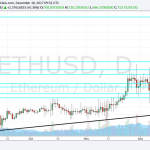Although the Fed rate hike hearsay continues to dominate the headlines, investors haven’t really seen this speculation shift to huge gains for the U.S. dollar, at least not in the recent timeframe. In fact, the greenback — as represented by the U.S. dollar Index — has lost its value in the last one month and five-day period (as of September 15, 2015).
One of the reasons for this unexpected move was an extremely dour trading scene throughout August and the start of September. Maddening economic issues in China – a currency devaluation and a six-and-half-year low manufacturing data for August – took the global market in its grip, and crushed the global equities in the last one month.
Yet the U.S. dollar has held firm in 2015 (so far), as many investors remain long-term bulls on the world’s reserve currency due to a recovering American economy. This was truer as the most developed and emerging nations are dragging their feet currently, leaving the U.S. as the lone star.
The U.S. economy underwent an upward GDP revision for the second quarter of 2015, from 2.3% reported earlier to 3.7% upgraded later on strong domestic demand. If this was not enough, the unemployment rate dropped to 5.1% in August, the lowest since April 2008. This more-than-seven-year low unemployment rate should bolster the case for an imminent policy tightening.
Additionally, average hourly wages rose 0.3% sequentially and 2.2% year over year. The average work week also nudged up to 34.6 from 34.5 in the prior and the year-earlier months. All these made September lift-off a heightened possibility that should have bolstered the greenback, but kept it range-bound due to global market rout.
Can Greenback Gain Post Fed?
Things are at a critical juncture at this moment. Two ETFs offering exposure to U.S. dollar (USD) against a basket of world currencies – PowerShares DB US Dollar Bullish Fund (UUP) and WisdomTree Bloomberg U.S. Dollar Bullish Fund (USDU) – are up 4.1% and 5.8% so far this year (as of September 15, 2015) but retreated about 1.3% and 0.2% in the last one month, respectively.
While many may view the recent dip in the greenback as a setback, we believe that this fall led the U.S. dollar and the related ETFs toward the fair valuation. These dollar-related products surged from the latter part of last year due to the diverging monetary policies between the U.S. and other developed and some emerging markets.
The U.S. wrapped up its QE measure late last year while Japan boosted its gigantic asset-buying program and the Euro zone initiated a QE launch in early 2015. This policy differential made the U.S. dollar a king among its peer currencies while other developed currencies started to lose out on economic stimuli.
As a result, the U.S. dollar index surged over 13% in the last one year (as of September 14, 2015). Thus, a certain pull-back will now help the U.S. dollar to better prepare for a rally if the Fed hikes rates this week (read: Forget Gold, Invest in Dollar ETFs for Safety).


















Leave A Comment